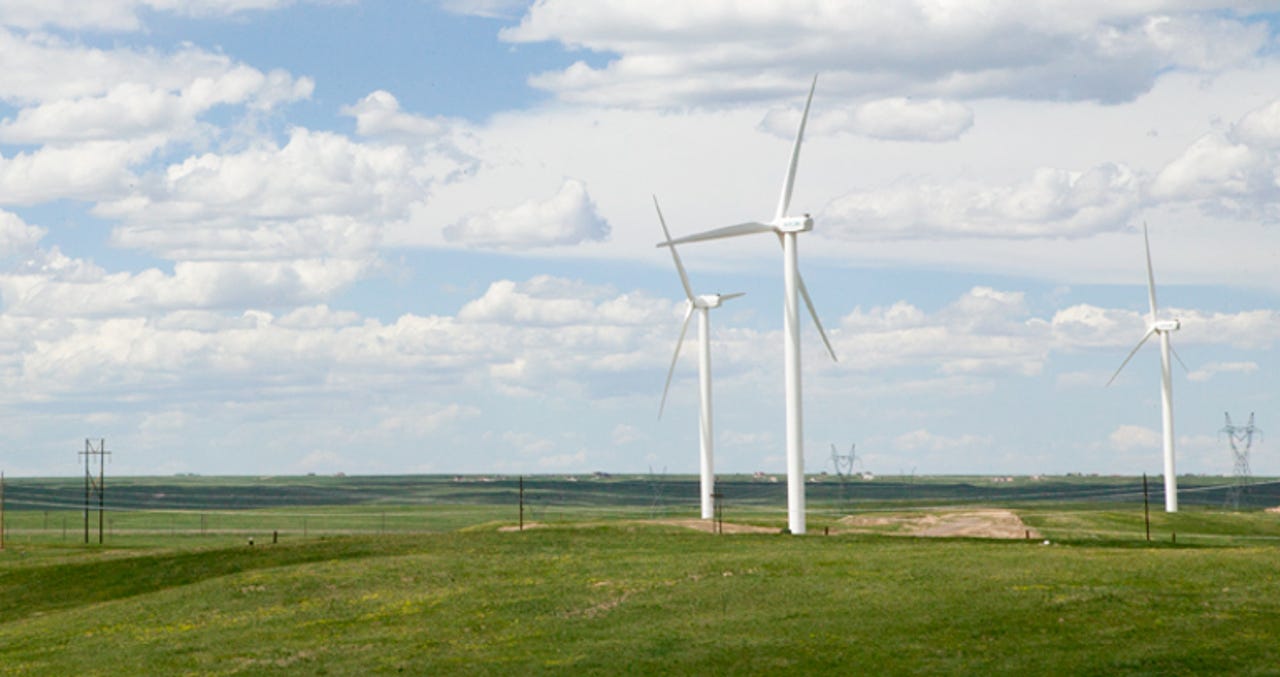Microsoft Azure: Cloud datacenter goes fully wind powered in landmark energy deal


Microsoft's datacenter in Cheyenne, Wyoming, will be completely powered by wind, some of which will come from the Happy Jack wind farm.
Microsoft has signed its largest wind deal yet, to give it 237 megawatts of wind energy to power its datacenter in Cheyenne, Wyoming.
The new wind deal brings Microsoft's total investment in US wind energy projects to 500 megawatts, and takes it a step closer to building a "responsible cloud", said Brad Smith, president and chief legal officer at Microsoft.
Smith said characteristics of Microsoft's wind-energy deal will also make it more affordable for cities and states to switch to cleaner energy. Part of that plan involves Microsoft hooking up its datacenter backup generators to the local grid.
Microsoft's wind-energy deal will support the 178-megawatt Bloom Wind Project in Kansas via a contract with Allianz Risk Transfer (ART), which announced a financial instrument in May to offer Bloom stable long-term revenues to offset its high upfront costs.
Microsoft says it's the first buyer to join ART's arrangement. The project is expected to launch commercial operations in Q3 2017.
The Bloom Wind Project will give Microsoft 178 megawatts, while the remaining 59 megawatts will come from a partnership with Black Hills to purchase energy from the Happy Jack and Silver Sage wind farms in Wyoming.
Combined, Microsoft says these sources will produce enough energy each year to power its Wyoming datacenter.
Under a similar arrangement, Google in June bankrolled the development of new wind farms in the south of Norway by buying their total output for 12 years. In that instance, the 160-megawatt capacity wind farm is expected to be fully operational by late 2017, offering Google's European datacenters more renewable energy. Google has purchased renewable energy from 18 providers around the world, representing over two gigawatts of renewable energy capacity.
Microsoft's Smith highlights that connecting the company's backup generators to the grid offers a new way of expanding Black Hills Energy capacity without raising rates for consumers.
"Microsoft and Black Hills Energy established a new tariff, available to all eligible customers, that lets the utility use our datacenter's backup generators as a secondary resource for the entire grid," explained Smith.
"Unlike traditional backup generators that run on diesel fuel, these natural gas turbines offer a more efficient solution and, more importantly, ensure the utility avoids building a new power plant."
Microsoft says about 44 percent of its datacenter energy is from wind, solar and hydropower. It's aiming to raise that figure to 50 percent by 2018.